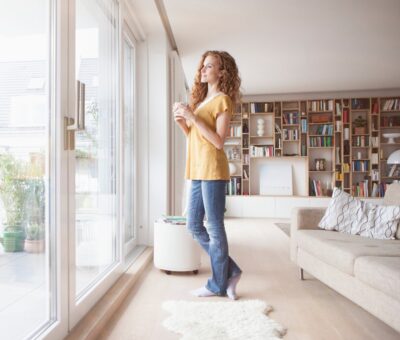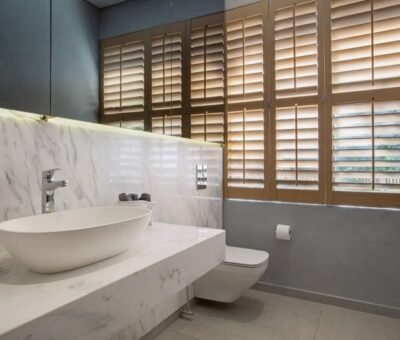Letting The Outdoors Inside With Swartland
The indoor-outdoor trend is here to stay, and what better way to open your home to the beauty that lies outside, than by installing new patio doors. Which door to choose? Hinged Pairs, Sliding or Folding – the variations can seem endless. Rather than let the sheer the volume of options confuse you –industry expert, Cobus Lourens from Swartland, a leading window and door manufacturer provides some clarification.
“New patio doors can improve the functionality of your home, as well as its aesthetics, liveability and the overall value of the property. They serve to enhance the flow between indoor and outdoor spaces – showcasing the gorgeous outdoor vistas beyond, as well as letting fresh air and natural light into your home’s interiors,” says Cobus.
The main types of patio doors
Cobus explains that there are three main types of patio doors –French Pairs, Sliding and Fold a Side doors: “The most suitable style of door will largely depend on the architectural style of your home, as well as its positioning and the main use of the door. Are you installing patio doors for a better view to the outdoors, for improved access, or for improving the overall appeal of your property?” Let’s look at the pros and cons of each type of patio door:
French Pairs: Two doors which are hinged doors to swing. They come in a wide variety of designs, and offer a timeless and classical appeal that compliments homes with more traditional architectural designs. You can choose to open just one door, or both of them, and they offer the best security when shut. However, they cannot be used in very wide openings, offer a reduced glazing area when compared to their counterparts, can slammed shut by wind if not secured with cabin hooks. They require space for the outward or inward opening arc of travel.
Sliding doors: As their name suggest, sliding doors are made up of two panels or 4 panels, one of which slides open over the other when opened. As they slide one over the other, they are a great option for smaller spaces, as you do not need any extra space to accommodate the opening motion like you would for French Pairs or Fold a Side doors. Furthermore, the large individual panels will maximise your view, the size of the opening can be easily controlled, and they can’t slam shut in the wind. However, even when open, the doors overlap, and therefore they don’t allow for the entire space to be opened up to the outdoors. They are also not suited to narrow openings.
Fold a Side Doors: These doors come in a wide variety of configurations that can span a wide or narrow opening, and they allow you to open up an entire area to the outdoors. They comprise narrower panels when compared to their sliding door counterparts, and are designed to fold back on to one another in a concertina fashion. When open – they create an unsurpassed and seamless flow from the indoor and outdoor spaces. For ease of everyday use, they can be fitted with a traffic door, which allows you to open just one door, without having to open up the all the panels. The door panels do stack at a 90° angle on the side of the opening, so extra space is required to accommodate this. Also, since the frames are comparatively smaller, when shut, they tend to break up the outdoor view more than sliding doors would.
Different types of materials
As a general rule, homeowners have only two basic choices when it comes to the materials used to make patio doors, says Cobus: “Although there are other materials on the market, timber and aluminium remain the two most popular choices – and because both materials offer a plethora of advantages, it is easy to understand why they are the only real choices to consider.”
Timber: Wooden patio doors offer unparalleled good looks – there is nothing that compares to the rich patina of genuine timber. If it is sourced from sustainably managed forests, wood boasts unsurpassed green credentials as a building material – it offers excellent insulation, it is durable and long lasting, and it is very easy to recycle. If sealed with a water-based sealant, it no longer requires a lot of maintenance to keep it looking its best. Swartland’s Ready2Fit range of doors for example, come pre-sealed and pre-glazed for optimum convenience. Cobus says: “As part of our environmental responsibility, Swartland has always strived to make quality products that are durable and long lasting. Which is why we kiln-dry our wood to a moisture content of 8%. This process helps keep the wood in perfect balance with local atmospheric conditions, thereby stabilising the timber and minimising movement or warping.”
Aluminium: Patio doors made from aluminium, such as Swartland’s KENZO range for example, are becoming increasingly sought after, Aluminium is an affordable, lightweight and durable material that is corrosion-resistant and performs well in the majority of climates. It is powder-coated, so it doesn’t need to be painted, and it boasts narrow profiles for a sleek and subtle visual appeal. Says Cobus: “Its natural strength means that aluminium doors can have really slim frames and hold more glass – meaning bigger doors with more glazing. This quality allows the outdoor views to take centre stage instead of the doors themselves.” Aluminium is also 100% recyclable, which reduces its overall carbon footprint.
Glazing considerations
Since glazing forms such a big part of any patio door, the type of glazing you choose will have an enormous impact on the functionality of the door in question. Cobus explains: “As per the National Building Regulations, all doors in Swartland’s KENZO and Ready2Fit ranges come fitted with 4mm toughened safety glass.” However, he notes that you can also choose from various other glazing options, including:
- Tinted glass: Tinted glass absorbs and re-radiates solar energy, thereby reducing sun glare, heat and providing climate control. It can absorb as much as 45% of incoming solar energy.
- Reflective glass: Offering a greater level of solar control when compared to tinted glass, reflective glass is made by adding a metallic coating during the manufacturing process to create a highly reflective appearance. It is most commonly available in the following tones – clear, neutral, green, grey, bronze and blue.
- Low E glass: Low Emissivity glass, better known as Low E glass, has a microscopically thin coating of metal oxide on the glass surface that allows the sun’s heat and light to pass through the glass into the home, while at the same time, blocking heat from escaping the room. This seriously reduces heat loss. Low E glass improves insulation by reflecting the radiation, rather than absorbing it. It is available in clear, neutral, blue, green and grey. Its ability to provide improved insulation properties makes tis a great insulating choice for all kinds of climates.
For more information, visit www.swartland.co.za or www.kenzo.co.za.
You might also like...
-
Enhance Your Home’s Aesthetic Appeal With These Five Window Trends with Swartland.

Windows play a multifaceted role in the design and functionality of a home. Beyond their practical functions of providing natural light and ventilation, windows ...
-
Rehau

A leading supplier of polymer-based solutions in the construction, automotive and industrial sectors, Rehau is known for its innovative approach in good and challenging times. ...
-
DECORATING AROUND PLANTATION SHUTTERS

Drawing inspiration from the grandeur of Southern plantations, Plantation Shutters effortlessly infuse any space with a touch of style and sophistication. Their widespread popularity is ...
-
Blindtec: How to Choose The Right Blinds For Your Interior

Choosing the right style of blinds can feel daunting as there is so much to consider. From colours to finishes, shapes and functionality – learn ...






























